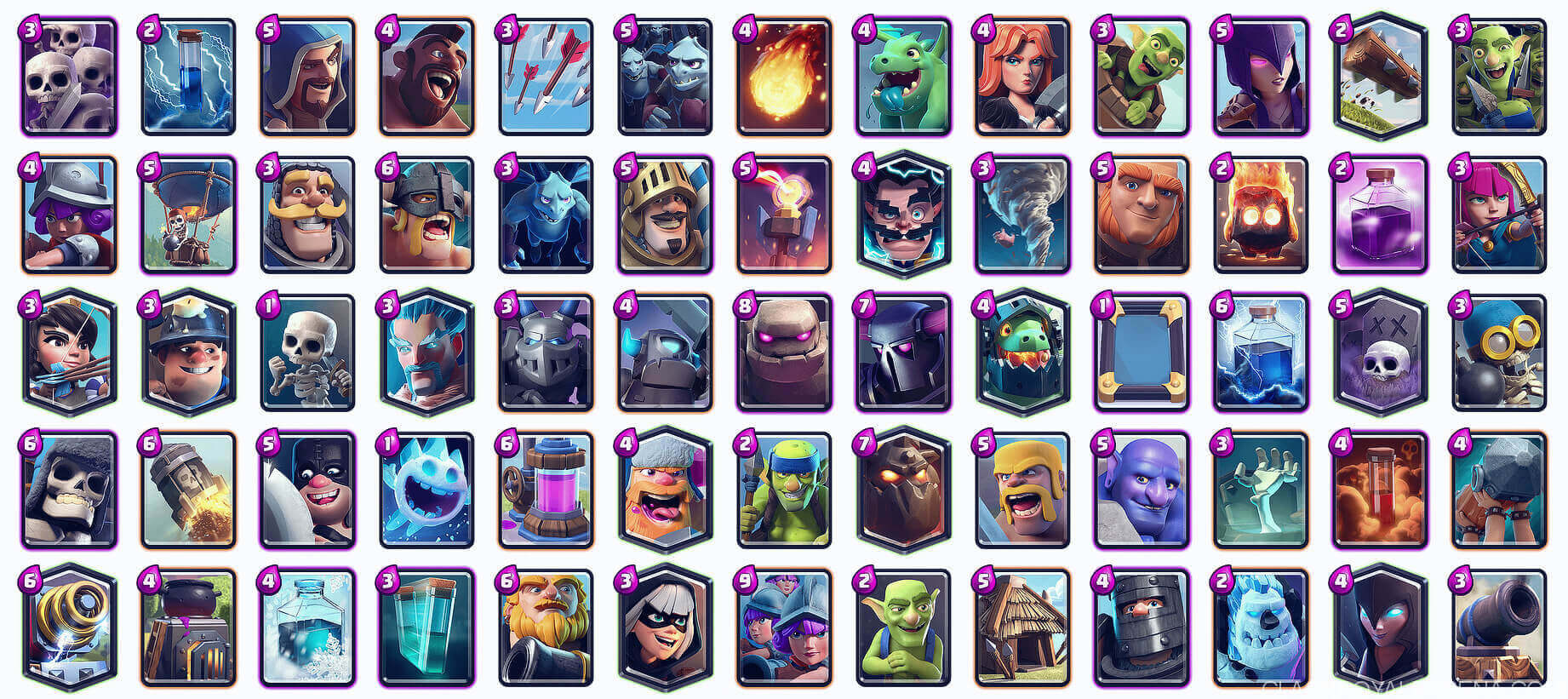Advanced Card Interactions in Clash Royale

Table of Contents
Introduction to Card Interactions
Understanding how cards interact with each other is what separates casual players from professionals. While anyone can learn card stats and basic counters, mastering the nuanced interactions between cards is what gives you a true competitive edge.
In this comprehensive guide, we'll explore the hidden mechanics, precise placements, and timing tricks that top players use to maximize their card value. These techniques aren't obvious but can dramatically improve your win rate once mastered.
Advanced Placement Techniques
Card placement is an art form in Clash Royale. A difference of just one tile can completely change the outcome of an interaction.
Key Placement Techniques:
- The 4-3 Plant - Placing buildings 4 tiles from the river and 3 tiles from the tower to maximize defensive coverage
- Kiting - Placing troops in specific locations to draw enemy units away from your towers
- Pig Push - Using specific placements to bypass building placements with Hog Rider
- Defensive Triangle - The optimal defensive formation using three units to counter large pushes
- Splash Damage Maximization - Positioning splash units to hit multiple targets simultaneously
Pro Tip: The Anti-Spell Spread
When deploying multiple units vulnerable to the same spell (like Fireball), place them far enough apart that your opponent can't hit all of them with a single spell. This forces them to choose which units to target or spend more elixir on multiple spells.
Perfect Timing Mechanics
Timing is just as important as placement. Deploying a card even half a second too early or too late can completely change the outcome of an interaction.
Critical Timing Techniques:
- Spell Prediction - Anticipating and countering your opponent's next move
- Troop Staggering - Deploying troops with precise timing to avoid area damage
- The Last-Second Deploy - Waiting until the last possible moment to counter an incoming threat
- Animation Cancelling - Using specific card sequences to reset attack animations
- Elixir Rhythm Disruption - Breaking your opponent's deployment pattern
One of the most powerful timing techniques is deploying a counter card at the exact moment an enemy troop crosses the bridge. This maximizes your defensive potential while setting up for a counter-push.
Pro Counter Strategies
Knowing how to efficiently counter popular cards and combinations is essential for climbing the ladder.
Advanced Counters for Meta Cards:
- Mega Knight - Using mini-tanks + DPS or kiting techniques
- Electro Giant - Building placement to minimize reflection damage
- Balloon - Timing air counters to prevent death damage
- Goblin Barrel - Prediction and rotation management
- Sparky - Reset timing and distraction techniques
The most efficient counters often involve multiple cards working together. For example, using Ice Spirit + Skeletons to counter a Mini P.E.K.K.A for a +3 elixir trade.
Powerful Card Synergies
Some cards become exponentially more powerful when paired with specific partners. Understanding these synergies can help you build more effective decks.
Elite Synergy Combinations:
- Giant + Graveyard - Using the Giant as a tank while Graveyard damages the tower
- Miner + Wall Breakers - Miner tanks for Wall Breakers for massive damage
- Hog Rider + Earthquake - EQ removes buildings that counter Hog
- Lava Hound + Balloon - The classic "Lavaloon" combination
- Ice Golem + Bats - Ice Golem tanks and slows while Bats deal damage
The best synergies address each card's weaknesses. For example, Valkyrie covers Balloon's vulnerability to swarms, while Balloon addresses Valkyrie's lack of tower-targeting capability.
How to Practice and Master Interactions
Mastering card interactions requires deliberate practice. Here's how to efficiently improve:
Practice Methods:
- Friendly Battles - Practice specific interactions with clanmates
- Challenge Modes - Use special challenges to test interactions
- Replay Analysis - Study your own replays and pro gameplay
- Training Camp - Test precise placements without pressure
- Private Tournaments - Practice against various decks and playstyles
Practice Exercise
Choose one interaction to master each day. For example, spend a day focusing solely on perfecting your Inferno Tower placement against Golem pushes. Take notes on what works and what doesn't.
Conclusion
Mastering card interactions is a never-ending journey in Clash Royale. The game's depth comes from the countless ways cards can interact with each other, and new interactions are discovered even years after cards are released.
Start by focusing on the interactions most relevant to your deck. If you play Hog Cycle, master the interactions between your defensive cards and common Hog counters. If you play Golem Beatdown, focus on maximizing your support troops' effectiveness.
Remember that theory is important, but practical experience is essential. Apply these concepts in real matches, analyze your results, and continuously refine your understanding of how cards interact.
Want to Apply These Techniques?
Check out our Meta Tier List to see which cards are currently strongest, then practice these advanced interactions with the most relevant cards!
Learn About Elixir Management